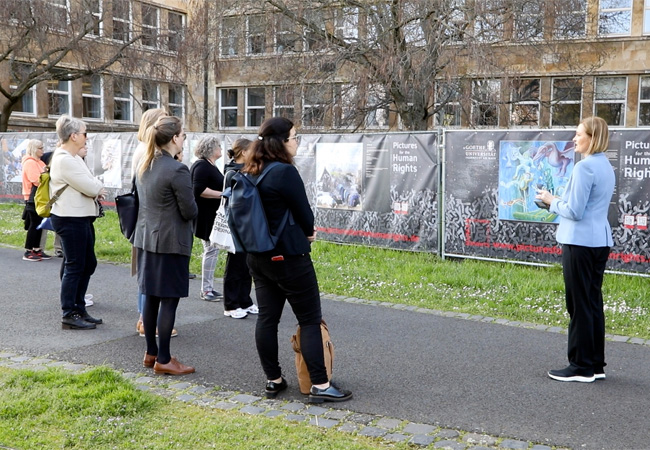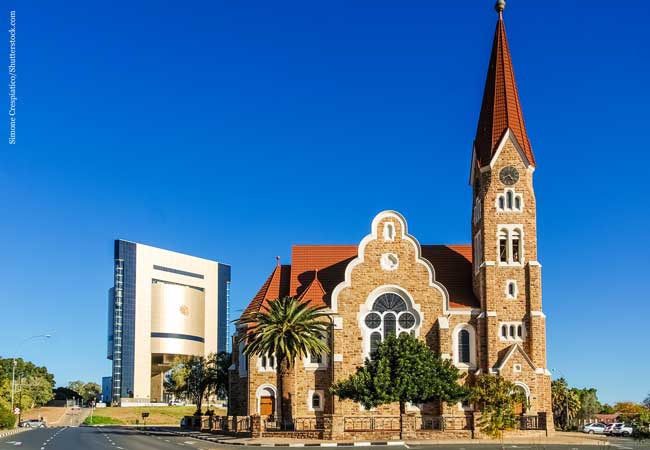The association “Pictures for the Human Rights e.V.” asked 30 artists to create a picture of one of the 30 articles of the Universal Declaration of Human Rights. The artworks are currently on display at an open-air exhibition at Goethe University’s IG Farben-Haus until June 23.
75 years ago, the United Nations General Assembly adopted the Universal Declaration of Human Rights, following a lengthy negotiation process and – contrary to original plans – as a non-binding legal document. Since then, the Declaration has acted as a “moral wake-up call,” Goethe University legal scholar Prof. Beatrice Brunhöber said at last Friday’s opening ceremony for the “Pictures for the Human Rights” exhibition. That being said, she added, it is still worth considering how these fundamental formulations on human rights could have a legal effect.
The open-air exhibition “Pictures for the Human Rights” is shown along the construction fences surrounding Westend Campus’ IG Farben building until June 23. On display are 30 pictures by international artists, who were asked by the “Pictures for Human Rights e.V.” association to create an artwork for each of the 30 articles of the United Nations Universal Declaration of Human Rights. “Human rights exist, but are too little known,” said association chairwoman Barbara Wilmers-Hillenbrand in explaining the initiative’s goal. “We want to make these rights visible through the universal language of art and display them on construction fences in public spaces.” Explaining in a video message why she created the painting on Article 26, which grants everyone the right to education, lawyer and painter Ulrike Lang said: “Education is the most important key to a better world.”

In his opening speech, Goethe University President Prof. Enrico Schleiff emphasized that the university is inviting people to view the exhibition on campus precisely because human rights play such a manifold role at Goethe University. They are as much addressed in research on migration policy, as they are fundamentally present in research and teaching in the social sciences, law and humanities. In addition, Westend Campus’ culture of remembrance is inextricably linked to the topic: The IG Farben-Haus served as the main administrative headquarters of IG Farben, the company that produced the poison gas Zyklon B used by the Nazis in concentration camps. It is also the place from which, in 1948, General Dwight D. Eisenhower ordered the West German state governors to draft the Grundgesetz [Basic Law], Germany’s constitution.
The open-air exhibition on Westend Campus, which is freely accessible to interested parties at all times, is organized by Goethe University Frankfurt with the support of the Vereinigung der Freunde & Förderer der Goethe-Universität [Association of Goethe University Friends and Supporters] and the Johanna Quandt Universitäts-Stiftung [Johanna Quandt University Foundation]. Founded by artists and art supporters, the non-profit association “Pictures for the Human Rights e. V.” aims to raise awareness of the articles of the Universal Declaration of Human Rights.
The traveling exhibition was already displayed at eight locations, including Regensburg and Luxembourg.








